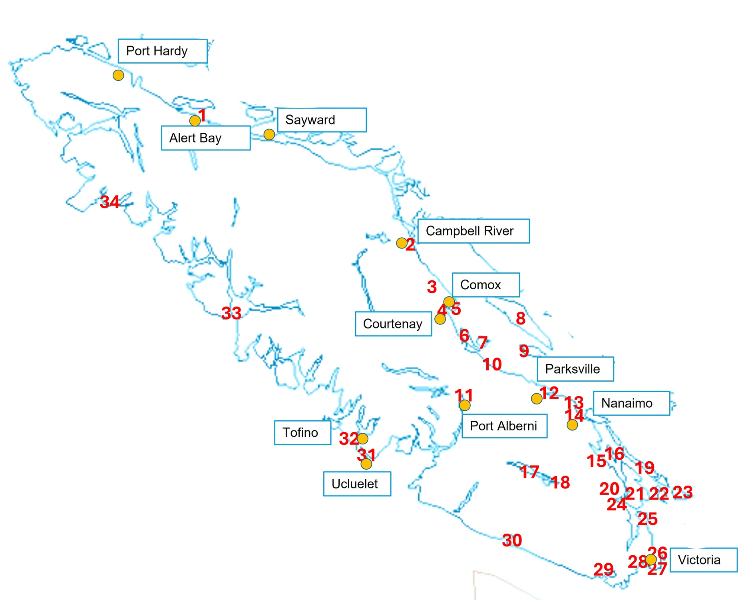
Vancouver Island Indigenous Information
- …
Vancouver Island Indigenous Information
- …
Vancouver Island Indigenous Information
Vancouver Island Indigenous Place Names Map
and Meanings from the Brochure
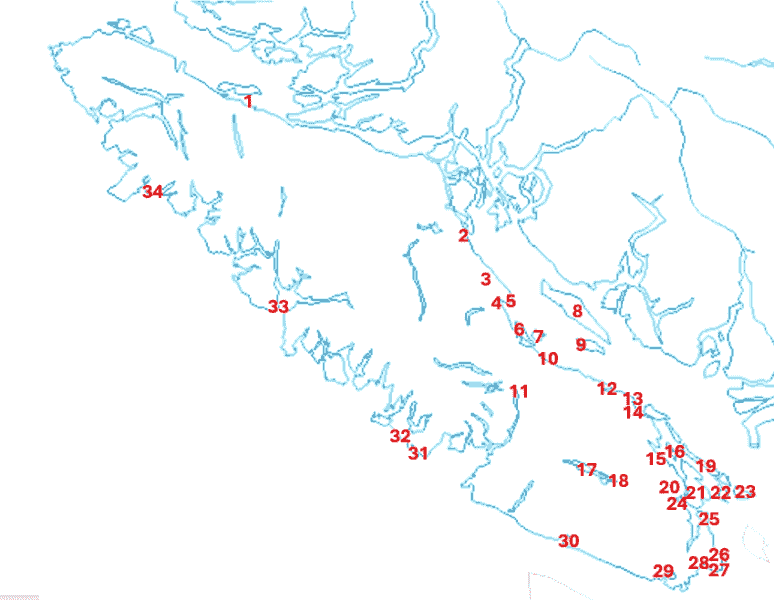
Vancouver Island is home to 50 Indigenous Nations which equates to almost 20% of provincial Indigenous Nation’s on Vancouver Island and about 6% of the Indigenous Nations national total. Among these Indigenous Nations on Vancouver Island, there are three main language groups: Coast Salish, Nuu-chah-nulth and Kwakwaka’wakw
Below you will see the Number on the Map, English placename, Indigenous place name, Indigenous language, (Anglicization of Indigenous language name), meaning of the Indigenous language word or Interesting Fact about the area.
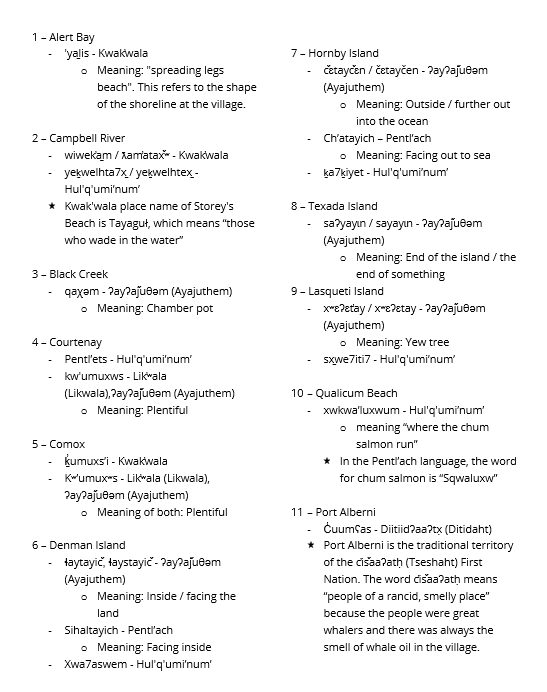
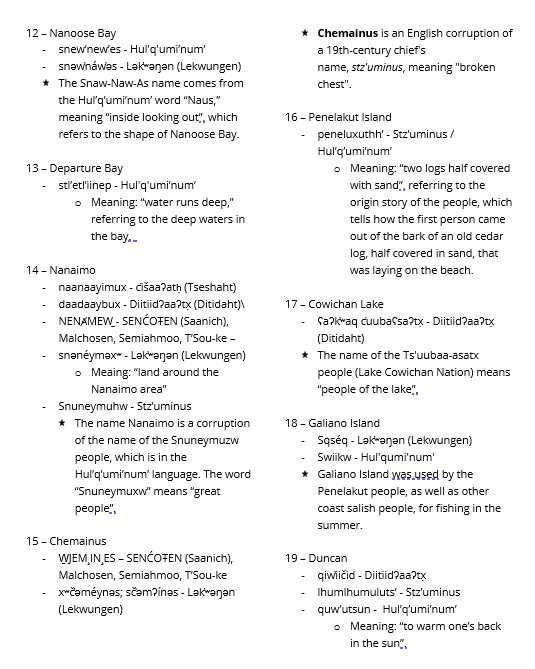
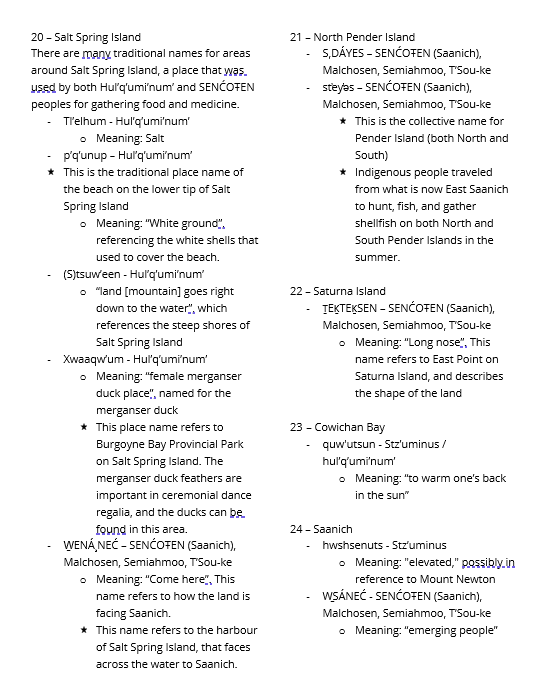
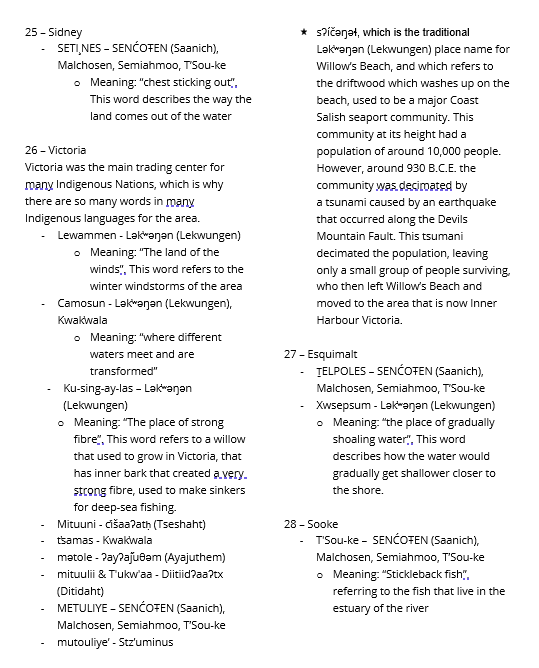
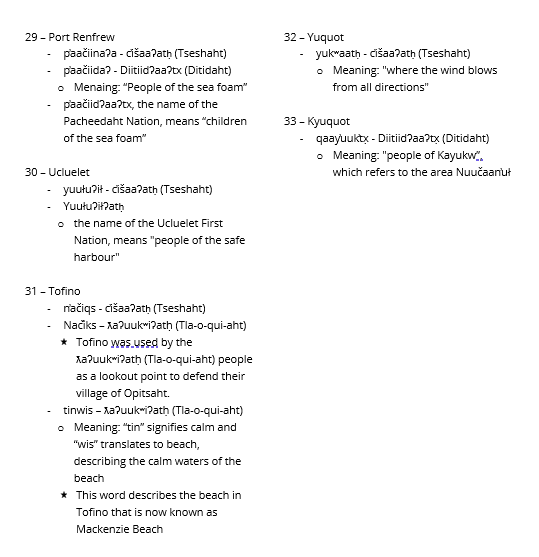
Victoria Place Names Map & Meanings
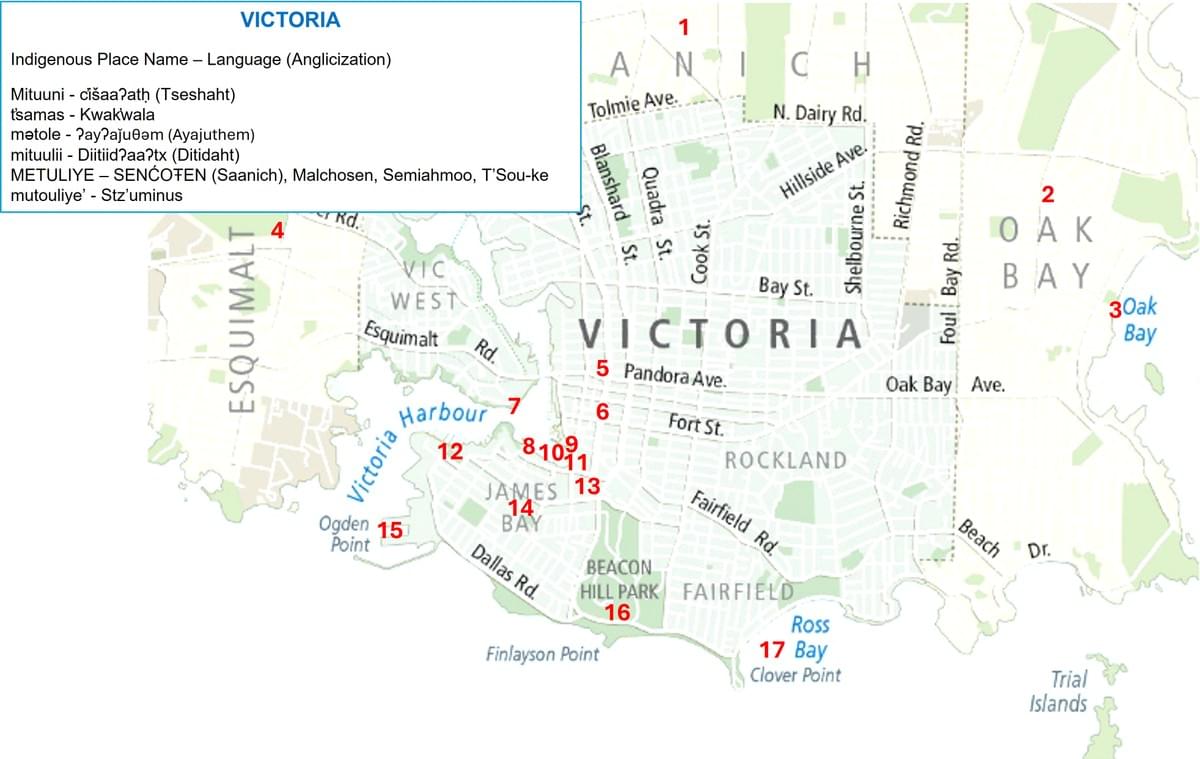
Below you will see the Number on the Map, English placename, Indigenous place name, Indigenous language, (Anglicization of Indigenous language name), meaning of the Indigenous language word or Interesting Fact about the area.
If there are no meanings listed, it is because the meaning has been lost to time and the word in the Indigenous language means the area around that location.
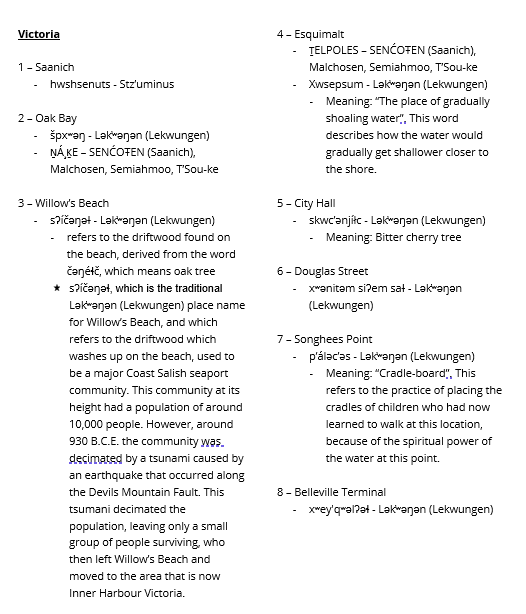

Comox Place Names Map & Meanings
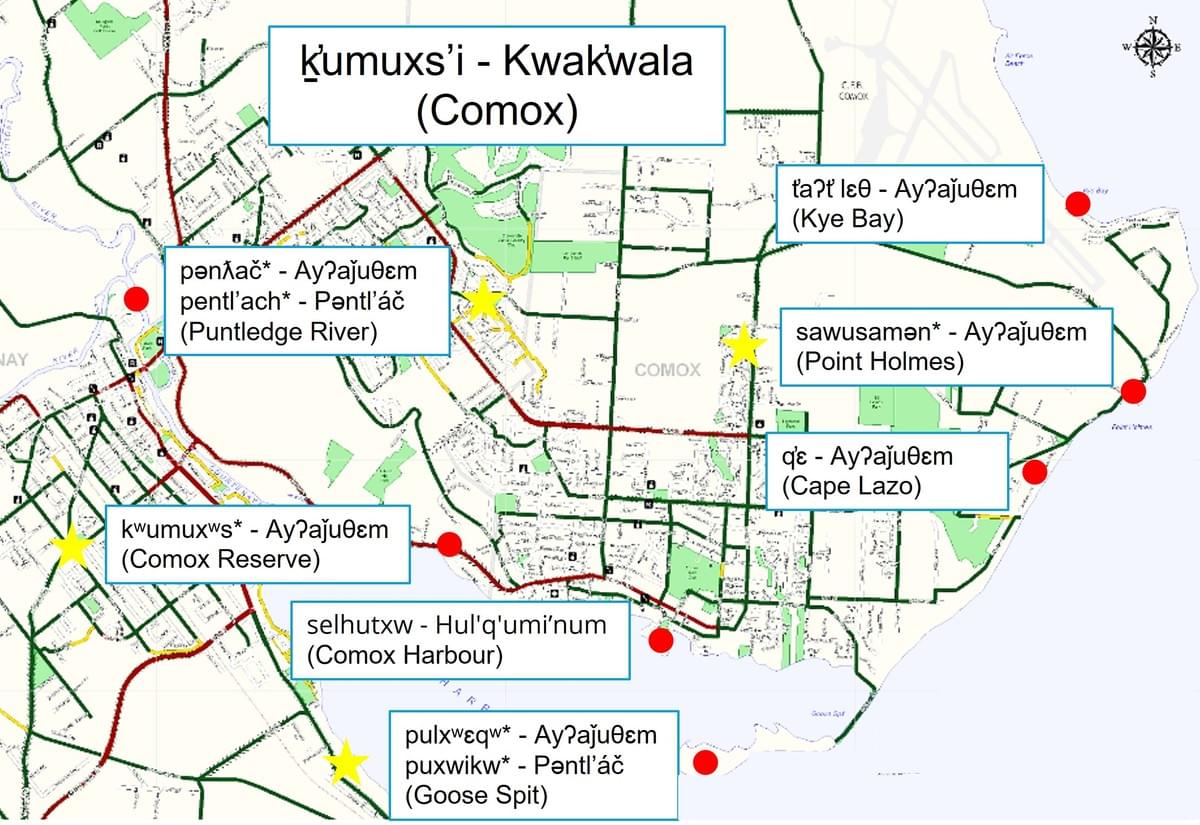
Below you will see the Number on the Map, English placename, Indigenous place name, Indigenous language, (Anglicization of Indigenous language name), meaning of the Indigenous language word or Interesting Fact about the area.
If there are no meanings listed, it is because the meaning has been lost to time and the word in the Indigenous language means the area around that location.
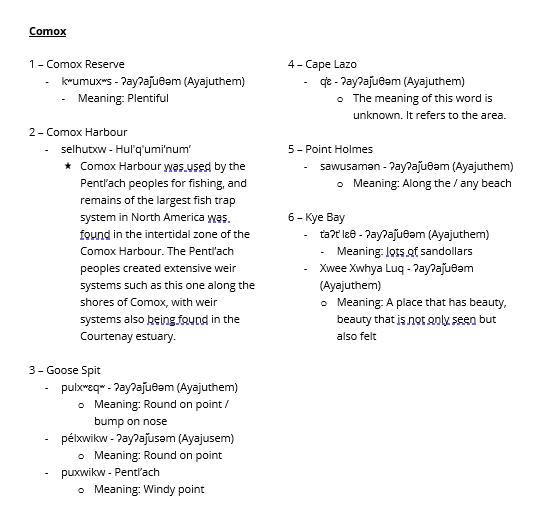
Information about Indigenous Languages found on the Vancouver Island Indigenous Place Names Brochure
There are around eight Indigenous Languages spoken on Vancouver Island, by the many different First Nations groups that are indigenous to Vancouver Island. All of these languages are part of the Salishan and Wakashan language families, and are spoken in Kwakwaka’wakw, Nuu-chah-nulth, or Coast Salish communities.
The Salishan languages spoken on Vancouver Island are mainly spoken by First Nations people in the Coast Salish region, except for two First Nations groups in the Kwakwaka’wakw area, and the Homalco and Klahoose First Nations people, which both speak languages in the Salishan language family.
The Salishan Language family includes:
- ʔayʔaǰuθəm (Ayajuthem)
- Hul'q'umi'num
- Stz’uminus
- Pentl'ach
- SENĆOŦEN
- Malchosen
- Semiahmoo
- T’Sou-ke
- Lək̓ʷəŋən
Images below are sources from this Site
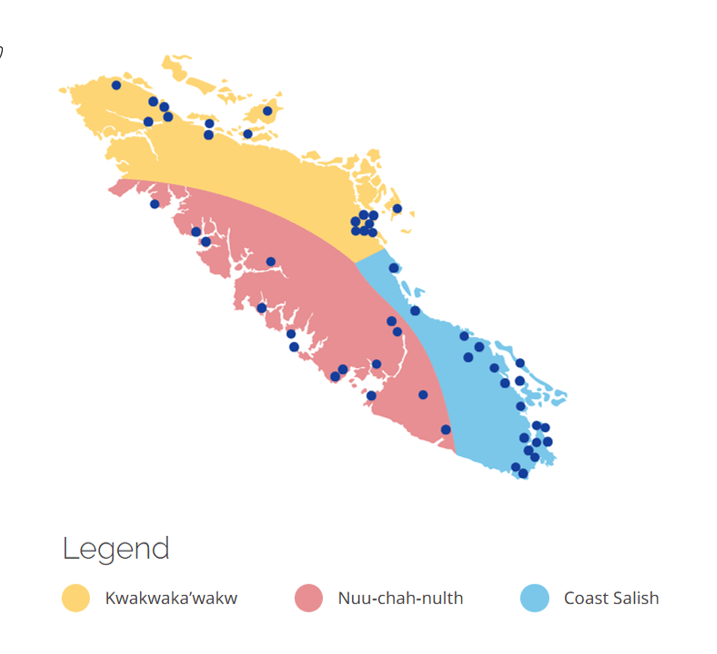
ʔayʔaǰuθəm (Ayajuthem) “eye-ah-jew-thum”
ʔayʔaǰuθəm is spoken by the Homalco, Klahoose, K’omoks and Tla’amin First Nations. The Homalco First Nation issituated in Bute Inlet and Campbell River, and the Klahoose First Nation territory stretches from Cortes Island to Toba Inlet. The K’omoks First Nation is located in the Comox Valley, with territory from Kelsey Bay to Hornby Island and Denman Island.
While the Tla’amin Nation is not located on Vancouver Island, their traditional territory spanned both sides of the Georgia Strait.
The ʔayʔaǰuθəm language has two dialects, ʔayʔaǰuθəm, the mainland dialect, and ʔayʔaǰusəm, the Island dialect. Homalco, Klahoose and Tla’amin Nations all speak the mainland dialect, as their traditional territory is not on the Island. The K’omoks First Nation, however, traditionally spoke ʔayʔaǰusəm, the Island dialect, as well as Pentl'ach and neighboring languages such as Kwak̓wala.
The ʔayʔaǰuθəm dialect was lost, with the last fluent speaker passing in the 1990’s. For the map, I have used words from the Homalco and Tla’amin dialects.
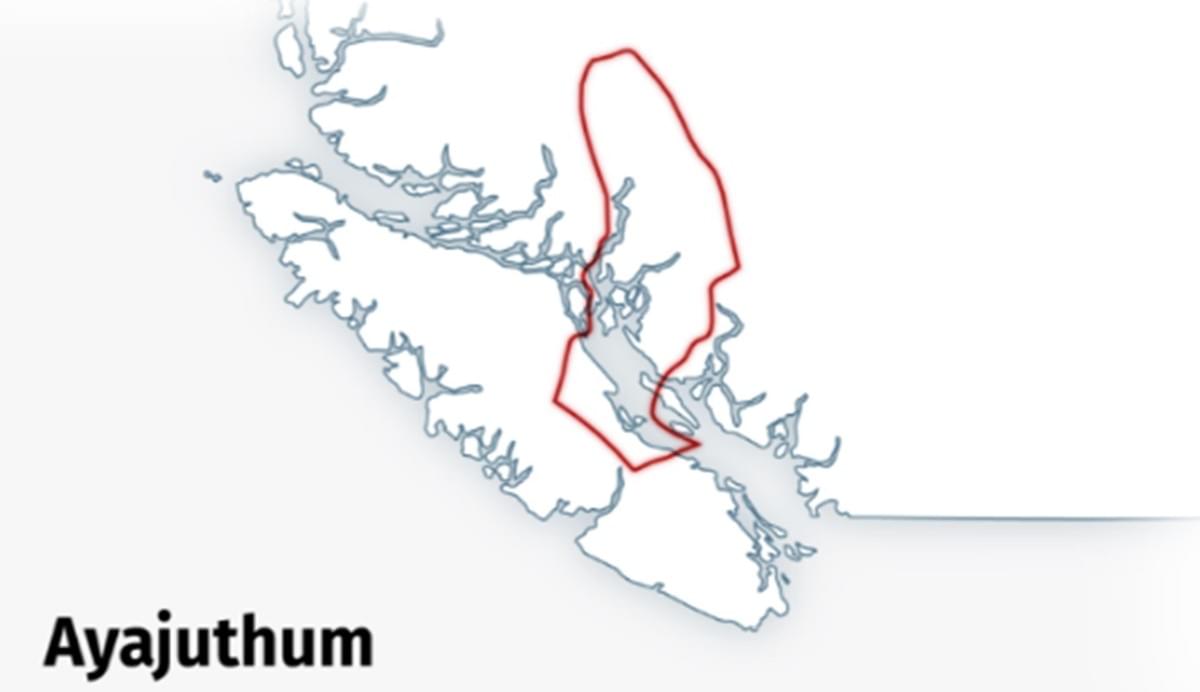
Pentl'ach "punt-lutch"
The Pentl'ach language is spoken by two First Nations, the Qualicum First Nation, located near Qualicum Beach, and the K’omoks First Nation. This language has no fluent speakers and is in the process of revitalization, after being declared “extinct” in the 1940’s. However, from the knowledge of the language that has been held onto by the Pentl'ach people, the Qualicum First Nation has been able to work on bringing back the language.
Since this language was spoken by both the Qualicum First Nation, whose main language was Pentl'ach, and the K’omoks First Nation, who also spoke ʔayʔaǰuθəm, the Pentl'ach and ʔayʔaǰuθəm place names are very similar, only with different spellings.
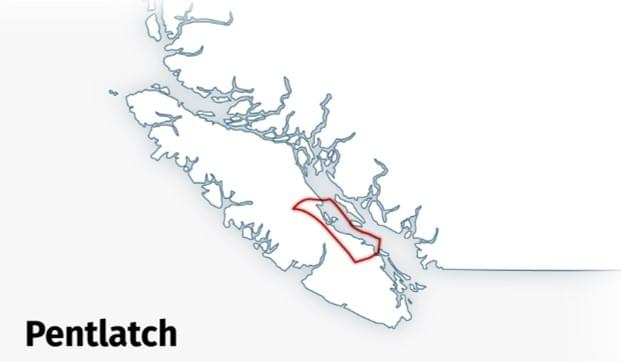
Hul'q'umi'num "hul k umi num"
The Hul'q'umi'num is spoken by the Snaw-naw-as le lum, Snuneymuxw, Lake Cowichan, Halalt, Lyackson, Penelakut, Cowichan, MÁLEXEŁ, BOḰEĆEN and Scia’new First Nations, and Stz’uminus is spoken by the Stz’uminus First Nation. Hul'q'umi'numis spoken in this region.
The Hul'q'umi'num language has three dialects, Upriver Halq̓eméylem, Downriver hən̓q̓əmin̓əm̓, Island Hul'q'umi'num. Island Hul'q'umi'num is spoken by all of these First Nations.
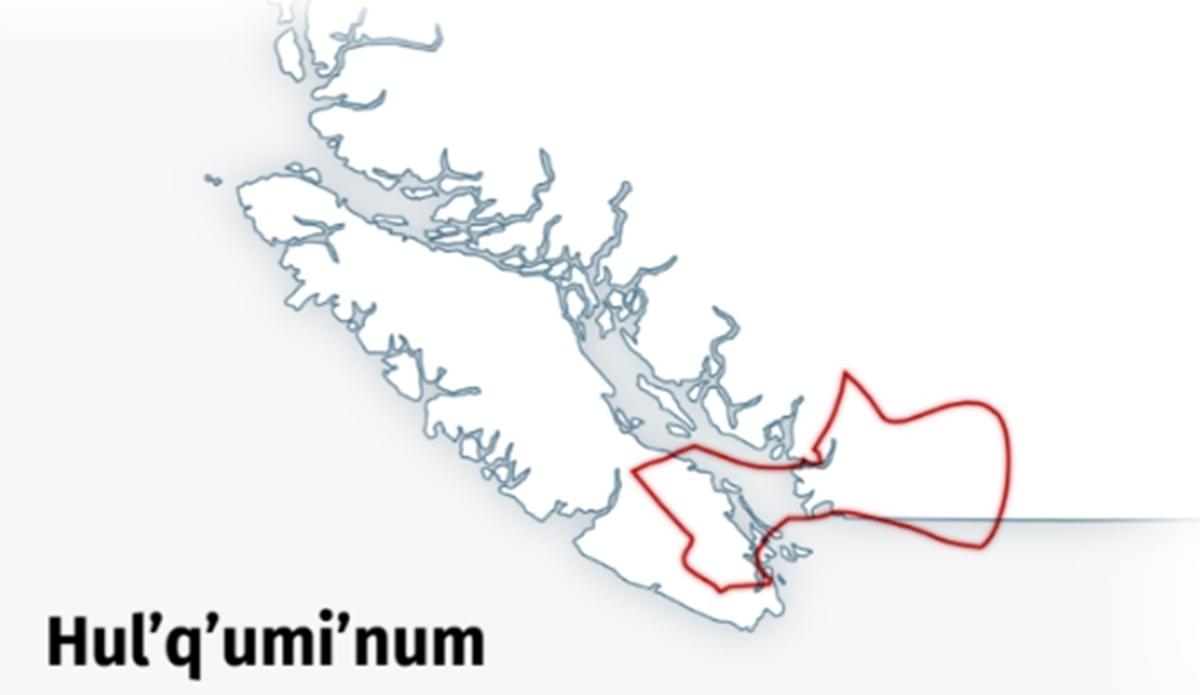
SENĆOŦEN, Malchosen, Semiahmoo, T’Sou-ke
"sen cho then"
The SENĆOŦEN language has many names, depending on the First Nation that speaks it. In the different Saanich dialects, the language can be called SENĆOŦEN, Malchosen, Semiahmoo, T’Sou-ke, or Lək̓ʷəŋən. Although these are all dialects of the same language, they are also called separate languages. To describe the overall language, it is called the Straits Salish language by linguists.
SENĆOŦEN, Malchosen, Semiahmoo, T’Sou-ke all use the same script, which was created by Dave Elliott, a member of the Tsartlip First Nation, in 1978. However, the Lək̓ʷəŋən speaking people use a completely different script. This, and that I was able to find many Lək̓ʷəŋən specific place names, due to the Lək̓ʷəŋən signs that have recently been put up in Victoria, is the reason why I separated SENĆOŦEN, Malchosen, Semiahmoo, T’Sou-ke and Lək̓ʷəŋən on the place names map I created.
SENĆOŦEN, Malchosen, Semiahmoo and T’Sou-ke are spoken by the MÁLEXEŁ, W̱SÍḴEM, BOḰEĆEN, SȾÁ,UTW̱, W̱JOȽEȽP and T’Sou-ke First Nations. The MÁLEXEŁ, or Malahat, First Nation is located between Victoria and Mill Bay. The W̱SÍḴEM, or Tseycum First Nation, is located at the centre of Patricia Bay on the Saanich Peninsula. The BOḰEĆEN, or Pauquachin, First Nation has three reserves at Coles Bay, Hatch Point and Goldstream. The SȾÁUTW̱, or Tsawout, First Nation is located north of Victoria on the east side of the Saanich Peninsula. The W̱JOȽEȽP, or Tsartlip, First Nation is located on the Saanich Peninsula, Gulf Islands, San Juan Islands, and across the Georgia Strait to Boundary Bay, and the T’Sou-ke First Nation is around the Sooke Basin on the Salish Sea (Strait of Juan de Fuca).
The Wakashan languages spoken on Vancouver Island are spoken by First Nations groups in both Kwakwaka’wakw and Nuu-chah-nulth regions, with the Kwakwaka’wakw region speaking Kwak’wala languages, and the Nuu-chah-nulth region, which includes 14 First Nations, mainly speaking Nuu-chah-nulth languages. The one exception is the Ditidaht and Pacheedaht First Nation groups, which speak Diitiidʔaaʔtx̣.
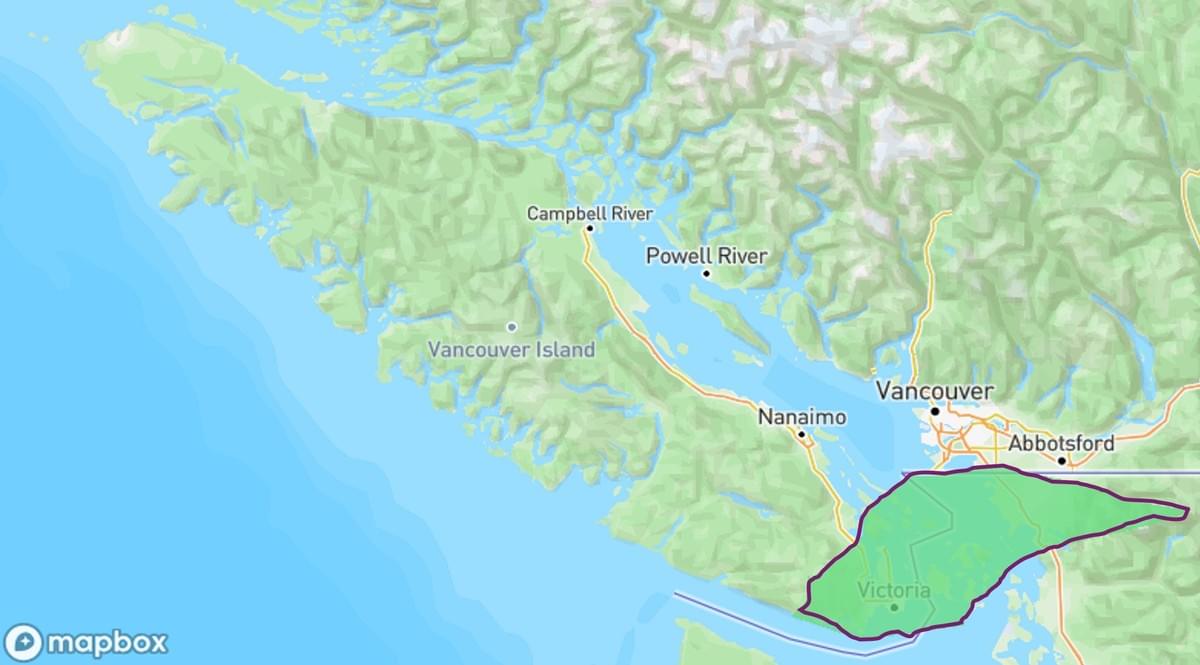
Kwak’wala "Kwak wa la"
Kwak’wala is comprised of several dialects, Kwak̓wala, ’Nak̓wala, Gwa’cala, G̱utsala, Liq̓ʷala and T̓łat̓łasik̓wala. Kwak̓wala is spoken by the K’omoks First Nation, as Kwak̓walawas a neighboring language, as well as the Mamalilikulla-Qwe’qwa’sot’em, Tlowitsis, Da'naxda'xw and Awaetlala, Kwikwasut’inuxw, Haxwa’mis, Gwawaenuk, ʼNa̱mǥis, Quatsino and Kwakiutl. ’Nak̓wala, Gwa’cala and G̱utsala are dialects spoken by the Gwa’sala and ‘Nakwaxda’xw First Nations. The Liq̓ʷala dialect is spoken by the Kwiakah, Wei Wai Kum and Wei Wai Kai First Nations, and the T̓łat̓łasik̓wala dialect is spoken by the Tlatlasikwala First Nation. Kwak’wala is spoken in the northern to central Vancouver Island.
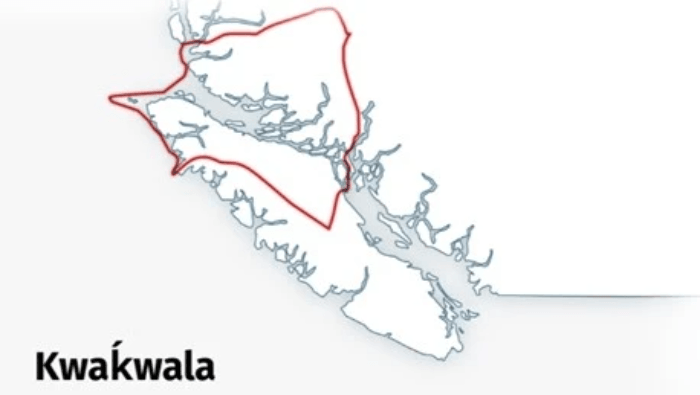
Nuu-chah-nulth (C̓išaaʔatḥ) "nuu-chah-nulth"
The Nuu-chah-nulth language and dialects are spoken by 14 Nuu-chah-nulth Nations in the Southern, Central and Nuu-chah-nulth language Northern regions. Therefore, the language has a large region where it is spoken, reaching down the side of Vancouver Island. The Southern First Nations include the Huu-ay-aht, in the Barkley Sound region, Bamfield and Port Alberni, and the Hupačasath in Port Alberni. This region also includes the Tse-shaht in Port Alberni and Alberni Valley, as well as on Benson Island, and the Uchucklesaht, near Port Alberni and Barkley Sound.
In the Central region are the Ahousaht, Hesquiaht, Tla-o-qui-aht, Toquaht, and Yuu-cluth-aht First Nations. The Ahousaht are located on the south eastern tip of Flores Island, and the Hesquiaht are located in Hot Springs Cove, Hesquiaht Harbour and Clayoquot Sound. The Tla-o-qui-aht First Nation are on Meares Island, as well as in Tofino and Long Beach and west of Port Alberni.
The Toquaht, or T̓uk̓ʷaaʔatḥ, are in Toquaht Bay, Mayne Bay and Western Barkley Sound, as well as Ucluelet and Port Alberni. The Yuu-cluth-aht, or Yuułuʔiłʔatḥ, First Nation is across from Ucluelet, as well as at the northern gateway to Barkley Sound. The northern region Nuu-chah-nulth Nations are Nuchatlaht, Ehattesaht/chinehkint, Kyuquot/Cheklesaht, and Mowachat/Muchalaht. The Nuchatlaht First Nation live on northern Nootka Island and the surrounding inlets, and the Ehattesaht/chinehkint First Nation lives on the Zeballos inlet.
The Kyuquot/Cheklesaht, or Ka:’yu:’k’t’h’ / Che:k:tles7et’h’, First Nation are located in Kyuquot and Cheklesaht, and the Mowachat/Muchalaht are located in Yuquot. Nuu-chah-nulth has many dialects, but the dialect that I used on my place names map is the C̓išaaʔatḥ dialect, spoken by the Tseshaht First Nation.
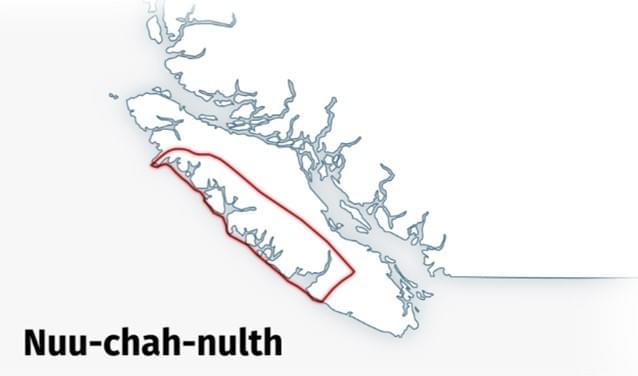
Diitiidʔaaʔtx̣ "di ti d a te"
The Diitiidʔaaʔtx̣ language, which is also spoken in the Nuu-chah-nulth speaking region, however, it is not the same language. This language is spoken by the Ditidaht and Pacheedaht First Nations. The Ditidaht First Nation territory is from the forests surrounding Cowichan Lake to the end of Nitinaht lake, and at the coastline, stretches between Bonilla Point and Pachena Point.
The Pacheedaht First Nation territory reaches from Bonilla Point to Sheringham Point. Therefore, this language is spoken in the Southern Nuu-chah-nulth region, although separate. This language is spoken on lower Vancouver Island.
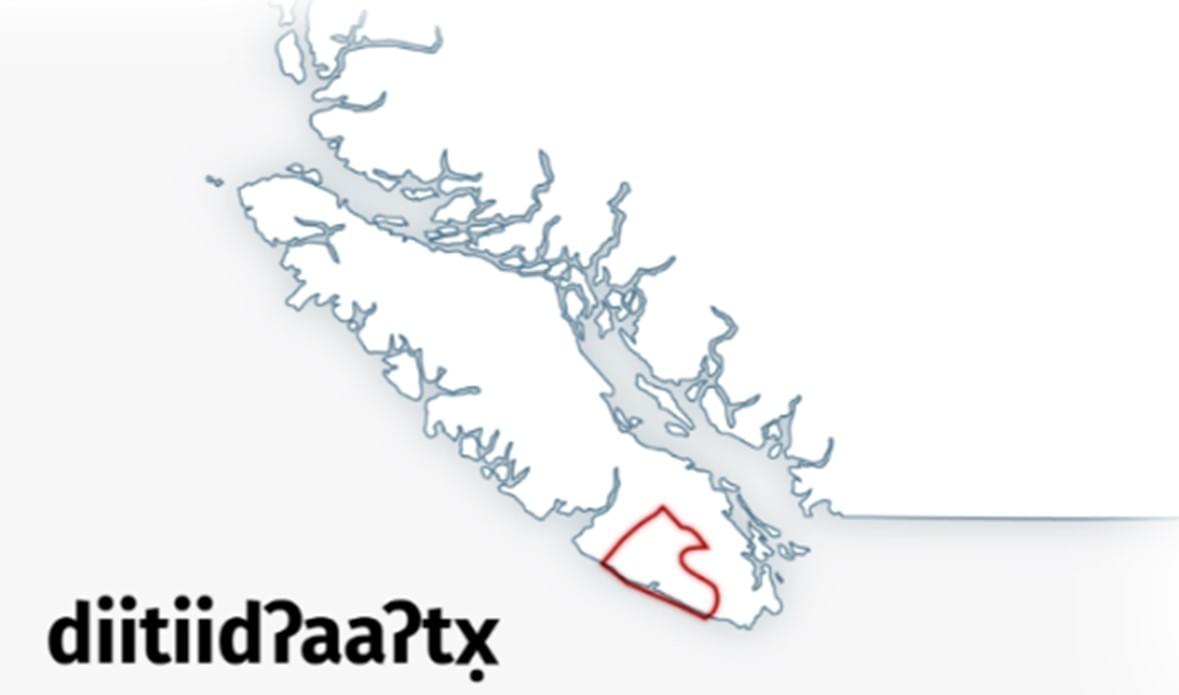
Lək̓ʷəŋən (Lekwungen) - Esquimalt and Songhees Nations
The Esquimalt Songhees Nation of the lək̓wəŋən (pronounced lekwungen) people is located beside Esquimalt and View Royal on Vancouver Island, five kilometres from Victoria. They are the descendants of the lək̓wəŋən people, original inhabitants of the Greater Victoria region. The Songhees name may come from the Lək̓wəŋən word meaning “people from scattered places”. Songhees is a Coast Salish Nation and the main language spoken historically was lək̓wəŋən people.
The Esquimalt Nation is a small nation on the water of Esquimalt Harbour. Our traditional name is Xwsepsum, also written Kosapsum. Known to have hunted, fished, and gathered across the southern portions of Vancouver Island and the lower Gulf and San Juan islands, these peoples also travelled to the coastal areas of the Lower Mainland and northwestern Washington State.
The Victoria (Matoolia) area was divided into five territories. These lands essentially belonged to settlements that were made up of extended families. Though some overlapped in places, they were as follows: Tsuli’lhchu, around Mount Douglas (P’q’a’ls); Cheko’nein, around Cadboro Bay; Chikowetch, around Oak Bay; Swenghwung, around James Bay; and Xwsepsum (sometimes spelled Kosapsum) in what is now called Esquimalt.
Though each sche’chu (family) had its own territory, they all spoke the same language, Lekwungen. There were many families living around what is now Victoria, Esquimalt and Saanich. What is now Victoria used to be shared by five other communities: the Cheko’nein, the Chilkowetch, the Swenghwung, the Hwyuwmilth, and the Teechamitsa. They spoke the same language.
©2025 - Vancouver Island Indigenous Information - Renee Petr - All Rights Reserved


















